MaryAnn Bernal's Blog, page 207
December 31, 2014
Diane Turner - London Rocks - 30-12-2014
Published on December 31, 2014 06:11
History Trivia - Ethelred of Wessex beats the Danish invasion army
December 31

192 The Roman emperor Commodus, whose brutal reign ended 90 years of peaceful prosperity, was assassinated.
406 Van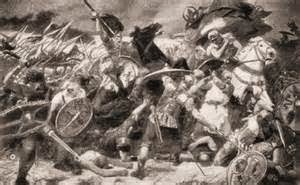 dals, Alans and Suebians crossed the Rhine, which began an invasion of Gaul.
dals, Alans and Suebians crossed the Rhine, which began an invasion of Gaul.

535 Byzantine General Belisarius completed the conquest of Sicily, defeating the Ostrogothic garrison of Syracuse, and ending his consulship for the year.

870 Skirmish at Englefield: Ethelred of Wessex beat the Danish invasion army.


192 The Roman emperor Commodus, whose brutal reign ended 90 years of peaceful prosperity, was assassinated.
406 Van
 dals, Alans and Suebians crossed the Rhine, which began an invasion of Gaul.
dals, Alans and Suebians crossed the Rhine, which began an invasion of Gaul. 
535 Byzantine General Belisarius completed the conquest of Sicily, defeating the Ostrogothic garrison of Syracuse, and ending his consulship for the year.

870 Skirmish at Englefield: Ethelred of Wessex beat the Danish invasion army.

Published on December 31, 2014 03:30
December 30, 2014
Top 10 'Star Trek' Technologies That Actually Came True
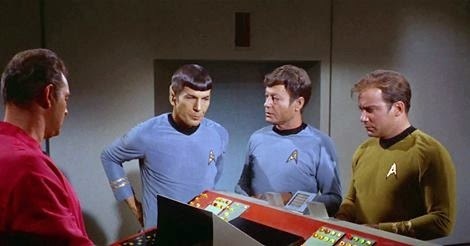 by Josh Briggs
by Josh BriggsHow Stuff Works
"Beam us up." It's one of the most iconic lines in television history. It's something often heard in the hit science fiction television series "Star Trek" and all of the television shows and movies that followed.
The transporter essentially dematerialized a human body at one point only to rematerialize it in the transporter bay on the ship. Somehow, it broke down atoms and molecules within the body -- scattered them through the vacuum of space without losing a single one from point A to point B, then voila, that person re-emerged out of thin air. Sounds pretty cool, though impossible, right? But what if there was such a device?
The truth is, you can forget about a transporter. No one has been able to realize such a concept. But that doesn't mean some of the ideas that seemed far-fetched when the show debuted in 1966 haven't become a reality. In this article, we feature the top 10 technologies from Star Trek that actually did come to fruition, listed in no particular order. Some of them may surprise you.
10 Transparent Aluminum (Armor) The fourth installment of the original "Star Trek" movies is perhaps the most endearing to fans. The crew returns to modern-day Earth. Kirk, Spock and the rest of the gang ditch a Klingon Bird of Prey spacecraft in the San Francisco Bay after narrowly missing the Golden Gate Bridge while flying blind in a storm. You may remember the scene -- but how many of you remember Scotty introducing transparent aluminum for the first time?
In the flick, Scotty traded the formula matrix for transparent aluminum -- a huge engineering advancement -- for sheets of plexiglass in order to build a tank to transport the two humpback whales (George and Gracie) to the Earth of their time. The claim was that you'd be able to replace six-inch (14-centimeter) thick Plexiglas with one-inch (2.5-centimeter) thick see-through aluminum.
It may sound impossible, but there is such a thing as transparent aluminum armor or aluminum oxynitride (ALON) as it's more commonly known. ALON is a ceramic material that starts out as a powder before heat and pressure turn it into a crystalline form similar to glass. Once in the crystalline form, the material is strong enough to withstand bullets. Polishing the molded ALON strengthens the material even more. The Air Force has tested the material in hopes of replacing windows and canopies in its aircraft. Transparent aluminum armor is lighter and stronger than bulletproof glass. Less weight, stronger material -- what's not to like?
9 Communicators Whenever Captain Kirk left the safe confines of the Enterprise, he did so knowing it could be the last time he saw his ship. Danger was never far away. And when in distress and in need of help in a pinch, he could always count on Bones to come up with a miracle cure, Scotty to beam him up or Spock to give him some vital scientific information. He'd just whip out his communicator and place a call.
Fast-forward 30 years and wouldn't you know it, it seems like everyone carries a communicator. We just know them as cell phones. Actually, the communicators in "Star Trek" were more like the push-to-talk, person-to-person devices first made popular by Nextel in the mid to late '90s. The "Star Trek" communicator had a flip antenna that when opened, activated the device. The original flip cell phones are perhaps distant cousins. Whatever the case, the creators of "Star Trek" were on to something because you'd be hard-pressed to find many people without a cell phone these days.
In later incarnations of the "Star Trek" franchise, the communicators evolved to being housed in the Starfleet logo on the crewman's chest. With the tap of a finger, communication between crewmembers became even easier. Vocera Communications has a similar product that can link people on the same network inside a designated area like an office or a building by using the included software over a wireless LAN. The B2000 communication badge weighs less than two ounces and can be worn on the lapel of a coat or shirt and allows clear two-way communication. It's even designed to inhibit the growth of bacteria so it's suitable for doctors [source: Vocera].
8 Hypospray
The creative team behind "Star Trek" found spiffy ways to spice up some activities we endure on a day-to-day basis. Take medical treatment, for example: Not many people enjoy getting a flu shot, and in "Star Trek," inoculating patients was one of Dr. Leonard "Bones" McCoy's primary duties. It seemed not an episode went by that Bones wasn't giving someone a shot of some sort of space vaccine. But what was more fascinating was the contraption he used.
Hypospray is a form of hypodermic injection of medication. A hypospray injection is forced under the skin (a subcutaneous injection) with high air pressure. The air pressure shoots the liquid vaccine deep enough into the skin that no needle is required. The real-world application is known as a jet injector.
Jet injectors have been in use for many years. In fact, the technology predates "Star Trek." Jet injectors were originally designed to be used in mass vaccinations. Jet injecting is safer (no needles to pass along infectious disease) and faster in administering vaccines. Similar in appearance to an automotive paint gun, jet injection systems can use a larger container for the vaccine, thus allowing medical personnel to inoculate more people quicker.
7 Tractor Beams When NASA needs to make repairs to the Hubble Space Telescope, astronauts have to be specially trained to get out of the Space Shuttle for extravehicular activity. They also have to learn how to work within the confines of their space suits, with thick gloves on. Wouldn't it be nice to just bring the telescope inside, where repairs wouldn't be so challenging and dangerous?
In science fiction, space ships including the Starship Enterprise snatch each other up using tractor beams. In some cases, large vessels have a tractor beam strong enough to prevent smaller vessels from escaping the gravitational force. So is this science even plausible?
Yes and no. Optical tweezers are as close as you're going to get to a legitimate tractor beam on current-day Earth. Scientists have harnessed small lasers into beams capable of manipulating molecules and moving them with precision. Optical tweezers use a focused laser to trap and suspend microscopic particles in an optical trap. Scientists can use optical tweezers to trap and remove bacteria and sort cells. Optical tweezers are used primarily in studying the physical properties of DNA. While the beams used in optical tweezers aren't strong enough to dock the space shuttle to the International Space Station, it's a start in that direction. 6 Phasers "Set phasers to stun" -- another oft-heard command given to the Enterprise crew. The crew often relied on the stun setting of their fictitious weapon of choice known as a phaser. Armed with a phaser, Kirk and his colleagues had the ability to kill or more desirably, stun their adversaries and render them incapacitated.
Actually, stun guns have been around for some time. In fact, electricity has been used for punishment and to control livestock as far back as the 1880s. But it wasn't until 1969 when a guy named Jack Cover invented the first Taser that the stun gun was most realized. The Taser fails to kill like the phaser did, yet, it packs enough of an electrical punch to render its victim disorientated, if not completely incapacitated.
Unlike the phaser, the Taser and other stun guns must come in physical contact with the target in order to have any effect. Tasers take care of this by projecting two electrodes, connected by wires, which attach to the target's skin. Once in contact, the handheld unit transfers electricity to the target, thus having the stun effect. Stun guns with stationary electrical contact probes are somewhat less effective because while they have a similar effect on the target, you have to be much closer (within arm's length) in order to zap your target.
Something more along the lines of the phaser may be in development. Applied Energetic has developed Laser Guided Energy and Laser Induced Plasma Energy technologies that are said to transmit high-voltage bursts of energy to a target [source: Applied Energetics]. In other words, these pulses of energy would stun the target and limit collateral damage. So a true phaser may soon be a reality.
5 Universal Translator
Imagine if no matter what country you visited, no matter what the culture, you could understand everything the indigenous people were saying. It sure would make traveling easier. Take that thought to another level like say, if you were planet hopping like the crew onboard the Enterprise. Fortunately for Captain Kirk and his peers, they had a universal translator.
The characters in "Star Trek" relied on a small device that when spoken into, would translate the words into English. Guess what? The technology exists for us in the real world. There are devices that let you speak phrases in English and it will spit back to you the same rhetoric in a specified language. The only problem is, these devices only work for certain predetermined languages.
A true universal translator like the one on the show may not be a reality, but the technology is available. Voice recognition has advanced considerably since its inception. But computers have yet to be able to learn languages. Computers would be able to theoretically gather the information much faster than a human brain, but a software program is dependent on actual data. Someone has to take the time and expense to put it together and make it available, which is probably why these systems focus on more popular languages.
4 Geordi's VISOR
When "Star Trek: The Next Generation" thrust the love of everything "Star Trek" back into popular culture, the quirky Mr. Spock and crass Bones McCoy and others were supplanted by a new cast. One of the most popular characters on the new show was engineer Geordi LaForge.
What made Geordi unique, perhaps even mysterious, was his funky eyewear. Geordi was blind, but after a surgical operation and aided through the use of a device called VISOR (Visual Instrument and Sensory Organ Replacement), Geordi could see throughout the electromagnetic spectrum. Though it may sound far-fetched, in reality, similar technology exists that may someday bring sight back to the blind.
In 2005, a team of scientists from Stanford University successfully implanted a small chip behind the retina of blind rats that enabled them to pass a vision recognition test. The science behind the implants, or bionic eyes as they're commonly referred to, works much the way Geordi's VISOR did. The patient receives the implants behind the retina, then wears a pair of glasses fitted with a video camera. Light enters the camera and is processed through a small wireless computer, which then broadcasts it as infrared LED images on the inside of the glasses. Those images are reflected back into the retina chips to stimulate photodiodes. The photodiodes replicate the lost retinal cells then change light into electrical signals which in turn send nerve pulses to the brain.
What it all means is that in theory, a person with 20/400 sight (blind), due to the loss of retinal cells from retinitis pigmentosa, can obtain 20/80 sight. It's not good enough to pass the driving test (normal vision is considered 20/20) but it's good enough to read billboards and go about your day without the aid of a seeing-eye dog.
3 Torpedo Coffins
Mr. Spock and crass Bones McCoy and others were supplanted by a new cast. One of the most popular characters on the new show was engineer Geordi LaForge.
What made Geordi unique, perhaps even mysterious, was his funky eyewear. Geordi was blind, but after a surgical operation and aided through the use of a device called VISOR (Visual Instrument and Sensory Organ Replacement), Geordi could see throughout the electromagnetic spectrum. Though it may sound far-fetched, in reality, similar technology exists that may someday bring sight back to the blind.
In 2005, a team of scientists from Stanford University successfully implanted a small chip behind the retina of blind rats that enabled them to pass a vision recognition test. The science behind the implants, or bionic eyes as they're commonly referred to, works much the way Geordi's VISOR did. The patient receives the implants behind the retina, then wears a pair of glasses fitted with a video camera. Light enters the camera and is processed through a small wireless computer, which then broadcasts it as infrared LED images on the inside of the glasses. Those images are reflected back into the retina chips to stimulate photodiodes. The photodiodes replicate the lost retinal cells then change light into electrical signals which in turn send nerve pulses to the brain.
What it all means is that in theory, a person with 20/400 sight (blind), due to the loss of retinal cells from retinitis pigmentosa, can obtain 20/80 sight. It's not good enough to pass the driving test (normal vision is considered 20/20) but it's good enough to read billboards and go about your day without the aid of a seeing-eye dog.
3 Torpedo Coffins
In the second installment of the "Star Trek" movie franchise, the beloved Mr. Spock, played by Leonard Nimoy, died after saving the Starship Enterprise from certain disaster. The movie culminated with the crew firing Spock's corpse out of the torpedo bay in a coffin shaped like one of the ship's weapons, the photon torpedo.
Believe it or not, you too could be laid to eternal rest in your own Federation-approved photon torpedo casket. OK, it may not technically be Federation-approved since there is no such thing as the United Federation of Planets (UFP) but the coffins are, in fact, very real.
Designed by Eternal Image, the "Star Trek" coffin was slated to be available early 2009, but is still not for sale as of this writing. The price is yet to be determined. If the fan would prefer to be cremated, the company also plans to offer a "Star Trek" urn as well. 2 Telepresence In 1966, the idea of interacting with each other while separated by the void of space seemed as far fetched as, well the idea of being in space. That's precisely what the idea of telepresence is.
Telepresence is more than just video conferencing. The visual aspect is important and immersion is vital. In other words, the more convincing the illusion of telepresence, the more you feel like you're there.
In 2008, AT&T teamed up with Cisco in delivering the industry's first in-depth telepresence experience. The key to Cisco's TelePresence is the combination of audio, video and ambient lighting working together. These telepresence kits are designed to mirror surroundings and mimic sounds so that users on each side of the video conference will feel as though the images on the screen are in the same room with them. For instance, the people in boardroom A will see the people on the screen in boardroom B as though they are sitting across the table from them. The ambient lighting and room features are constructed to mirror each other. Sure, these telepresence kits are much more advanced than anything drummed up on "Star Trek," but perhaps that's because the show sparked our imagination so many years ago.
1 Tricorders
How many of you remember that instrument Mr. Spock used to always carry over his shoulder, especially when the crew (usually consisting of only Spock and Captain Kirk) first surveyed a new planet? That was a tricorder.
One of the more useful instruments available to "Star Trek" personnel, variations of the tricorder (medical, engineering or scientific) were used to measure everything from oxygen levels to detecting diseases. Often times the tricorder gave an initial analysis of the new environment. So, what's the real-world tie-in? NASA employs a handheld device called LOCAD, which measures for unwanted microorganisms such as E. coli, fungi and salmonella onboard the International Space Station [source: Coulter]. Beyond that, two handheld medical devices may soon help doctors examine blood flow and check for cancer, diabetes or bacterial infection.
Scientists at Loughborough University in England use photoplethysmography technology in a handheld device that can monitor the functions of the heart. Meanwhile, researchers at Harvard Medical School have developed a small device that utilizes similar technology found in MRI machines that non-invasively inspect the body. Using nuclear magnetic resonance imaging, this device would be sensitive enough to measure samples of as few as 10 possible infectious bacteria. This kind of sensitivity (800 times more sensitive than sensing equipment currently used in medical labs) could revolutionize the way doctors diagnose disease [source: Mick].
Published on December 30, 2014 05:49
The second annual STOCKING YOUR E-READER SALE is here! - DECEMBER 29TH- JANUARY 2ND
More than 100 e-books .99 or LESS. More than 60 authors. AND AWESOME PRIZES. This is the biggest sale yet! hosted by:


More e-books than you can jingle a bell at, and all .99 or less! Pick the kind of books you want to read, then scroll to the bottom and enter to win some fantastic prizes. Like a Kindle FIRE 6" in your choice of color with $50 Gift Card to stock it anyway you'd like--and other awesome things. But first check out our sponsors, the sale wouldn't be as Jolly without them!The Briton and the Dane novels by Mary Ann Bernal are featured in this giveaway. Enter here


More e-books than you can jingle a bell at, and all .99 or less! Pick the kind of books you want to read, then scroll to the bottom and enter to win some fantastic prizes. Like a Kindle FIRE 6" in your choice of color with $50 Gift Card to stock it anyway you'd like--and other awesome things. But first check out our sponsors, the sale wouldn't be as Jolly without them!The Briton and the Dane novels by Mary Ann Bernal are featured in this giveaway. Enter here
Published on December 30, 2014 04:22
History Trivia - Lancastrians rout the Yorkists at the Battle of Wakefield
December 30

39 Titus was born. He was Roman emperor from 79-81 and during his reign the Coliseum was completed.

1370 Pope Gregory XI elected pope. Gregory attempted to foster peace between England and France during the Hundred Years' War, defeated Florence in its war against the Papal States, and returned the papacy to Rome from Avignon.
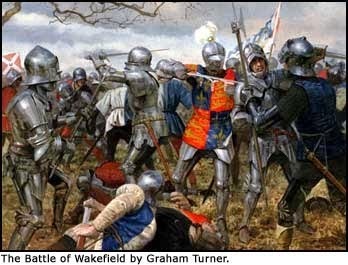
1460 The Lancastrians routed the Yorkists at the Battle of Wakefield, and executed Richard, Duke of York.


39 Titus was born. He was Roman emperor from 79-81 and during his reign the Coliseum was completed.

1370 Pope Gregory XI elected pope. Gregory attempted to foster peace between England and France during the Hundred Years' War, defeated Florence in its war against the Papal States, and returned the papacy to Rome from Avignon.

1460 The Lancastrians routed the Yorkists at the Battle of Wakefield, and executed Richard, Duke of York.

Published on December 30, 2014 03:00
December 29, 2014
Mystery of Ancient Chinese Civilization's Disappearance Explained
by Tia Ghose
Live Science
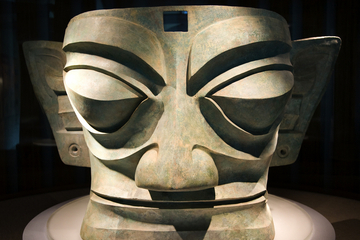 An archaeological site unearthed in 1986 in China revealed giant bronze statues from a lost Chinese civilization called Sanxingdui. Here, one of the bronze masks uncovered at the site, which is roughly 3,000 years old. A new theory suggests the ancient culture moved after an earthquake rerouted the flow of the city's river.
An archaeological site unearthed in 1986 in China revealed giant bronze statues from a lost Chinese civilization called Sanxingdui. Here, one of the bronze masks uncovered at the site, which is roughly 3,000 years old. A new theory suggests the ancient culture moved after an earthquake rerouted the flow of the city's river.
Credit: Bill Perry/Shutterstock.com
An earthquake nearly 3,000 years ago may be the culprit in the mysterious disappearance of one of China's ancient civilizations, new research suggests.
The massive temblor may have caused catastrophic landslides, damming up the Sanxingdui culture's main water source and diverting it to a new location.
That, in turn, may have spurred the ancient Chinese culture to move closer to the new river flow, study co-author Niannian Fan, a river sciences researcher at Tsinghua University in Chengdu, China, said Dec. 18 at the 47th annual meeting of the American Geophysical Union in San Francisco. [Ancient Chinese Warriors Protect Secret Tomb]
Ancient civilization
In 1929, a peasant in Sichuan province uncovered jade and stone artifacts while repairing a sewage ditch located about 24 miles (40 kilometers) from Chengdu. But their significance wasn't understood until 1986, when archaeologists unearthed two pits of Bronze Age treasures, such as jades, about 100 elephant tusks and stunning 8-feet-high (2.4 meters) bronze sculptures that suggest an impressive technical ability that was present nowhere else in the world at the time, said Peter Keller, a geologist and president of the Bowers Museum in Santa Ana, California, which is currently hosting an exhibit of some of these treasures.
The treasures, which had been broken and buried as if they were sacrificed, came from a lost civilization, now known as the Sanxingdui, a walled city on the banks of the Minjiang River.
"It's a big mystery," said Keller, who was not involved in the current study.
Archaeologists now believe that the culture willfully dismantled itself sometime between 3,000 and 2,800 years ago, Fan said.
"The current explanations for why it disappeared are war and flood, but both are not very convincing," Fan told Live Science.
But about 14 years ago, archaeologists found the remains of another ancient city called Jinsha near Chengdu. The Jinsha site, though it contained none of the impressive bronzes of Sanxingdui, did have a gold crown with a similar engraved motif of fish, arrows and birds as a golden staff found at Sanxingdui, Keller said. That has led some scholars to believe that the people from Sanxingdui may have relocated to Jinsha.
But why has remained a mystery.
Geological and historical clues
Fan and his colleagues wondered whether an earthquake may have caused landslides that dammed the river high up in the mountains and rerouted it to Jinsha. That catastrophe may have reduced Sanxingdui's water supply, spurring its inhabitants to move. [History's 10 Most Overlooked Mysteries]
The valley where Sanxingdui sits has a large floodplain, with 4.3 miles (7 kilometers) of high terraced walls that were unlikely to have been cut by the small river that now flows through it, Fan said.
And some historical records support their hypothesis. In 1099 B.C., ancient writers recorded an earthquake in the capital of the Zhou dynasty, in Shaanxi province, Fan said. Though that spot is roughly 250 miles (400 kilometers) from the historic site of Sanxingdui, the latter culture didn't have writing at the time, so it's possible the earthquake epicenter was actually close to Sanxingdui — but it just wasn't recorded there, Fan said. Geological evidence also suggests that an earthquake occurred in the general region between 3,330 and 2,200 years ago, he added.
Around the same time, geological sediments suggest massive flooding occurred, and the later-Han dynasty document "The Chronicles of the Kings of Shu" records ancient floods pouring from a mountain in a spot that suggests the flow being rerouted, Fan said. (Around 800 years later, Jinsha residents built a wall to prevent flooding.)
A river rerouted?
Together, the findings hint that a major earthquake triggered a landslide that dammed the river, rerouting its flow and reducing water flow to Sanxingdui, Fan said.
But if so, where did the river get rerouted? The team found clues high up in the mountains in the deep and wide Yanmen Ravine, at about 12,460 feet (3,800 meters) above sea level.
The modern-day river cuts through the ravine, which was carved by glaciers about 12,000 years ago. Yet the telltale signs of that glacial erosion — bowl-shaped basins known as cirques — are mysteriously absent for a long stretch of the ravine. The team hypothesizes that an earthquake spurred an avalanche that then wiped out some of the cirques about 3,000 years ago.
At this point, the theory is still very speculative, and additional geological data is needed to buttress it, Fan said.
And while the geological story is possible, Keller said, it doesn't answer the basic question: "What would motivate people to destroy their entire culture and bury it in two pits? And why didn't the culture reemerge at Jinsha?"
Live Science
 An archaeological site unearthed in 1986 in China revealed giant bronze statues from a lost Chinese civilization called Sanxingdui. Here, one of the bronze masks uncovered at the site, which is roughly 3,000 years old. A new theory suggests the ancient culture moved after an earthquake rerouted the flow of the city's river.
An archaeological site unearthed in 1986 in China revealed giant bronze statues from a lost Chinese civilization called Sanxingdui. Here, one of the bronze masks uncovered at the site, which is roughly 3,000 years old. A new theory suggests the ancient culture moved after an earthquake rerouted the flow of the city's river.Credit: Bill Perry/Shutterstock.com
An earthquake nearly 3,000 years ago may be the culprit in the mysterious disappearance of one of China's ancient civilizations, new research suggests.
The massive temblor may have caused catastrophic landslides, damming up the Sanxingdui culture's main water source and diverting it to a new location.
That, in turn, may have spurred the ancient Chinese culture to move closer to the new river flow, study co-author Niannian Fan, a river sciences researcher at Tsinghua University in Chengdu, China, said Dec. 18 at the 47th annual meeting of the American Geophysical Union in San Francisco. [Ancient Chinese Warriors Protect Secret Tomb]
Ancient civilization
In 1929, a peasant in Sichuan province uncovered jade and stone artifacts while repairing a sewage ditch located about 24 miles (40 kilometers) from Chengdu. But their significance wasn't understood until 1986, when archaeologists unearthed two pits of Bronze Age treasures, such as jades, about 100 elephant tusks and stunning 8-feet-high (2.4 meters) bronze sculptures that suggest an impressive technical ability that was present nowhere else in the world at the time, said Peter Keller, a geologist and president of the Bowers Museum in Santa Ana, California, which is currently hosting an exhibit of some of these treasures.
The treasures, which had been broken and buried as if they were sacrificed, came from a lost civilization, now known as the Sanxingdui, a walled city on the banks of the Minjiang River.
"It's a big mystery," said Keller, who was not involved in the current study.
Archaeologists now believe that the culture willfully dismantled itself sometime between 3,000 and 2,800 years ago, Fan said.
"The current explanations for why it disappeared are war and flood, but both are not very convincing," Fan told Live Science.
But about 14 years ago, archaeologists found the remains of another ancient city called Jinsha near Chengdu. The Jinsha site, though it contained none of the impressive bronzes of Sanxingdui, did have a gold crown with a similar engraved motif of fish, arrows and birds as a golden staff found at Sanxingdui, Keller said. That has led some scholars to believe that the people from Sanxingdui may have relocated to Jinsha.
But why has remained a mystery.
Geological and historical clues
Fan and his colleagues wondered whether an earthquake may have caused landslides that dammed the river high up in the mountains and rerouted it to Jinsha. That catastrophe may have reduced Sanxingdui's water supply, spurring its inhabitants to move. [History's 10 Most Overlooked Mysteries]
The valley where Sanxingdui sits has a large floodplain, with 4.3 miles (7 kilometers) of high terraced walls that were unlikely to have been cut by the small river that now flows through it, Fan said.
And some historical records support their hypothesis. In 1099 B.C., ancient writers recorded an earthquake in the capital of the Zhou dynasty, in Shaanxi province, Fan said. Though that spot is roughly 250 miles (400 kilometers) from the historic site of Sanxingdui, the latter culture didn't have writing at the time, so it's possible the earthquake epicenter was actually close to Sanxingdui — but it just wasn't recorded there, Fan said. Geological evidence also suggests that an earthquake occurred in the general region between 3,330 and 2,200 years ago, he added.
Around the same time, geological sediments suggest massive flooding occurred, and the later-Han dynasty document "The Chronicles of the Kings of Shu" records ancient floods pouring from a mountain in a spot that suggests the flow being rerouted, Fan said. (Around 800 years later, Jinsha residents built a wall to prevent flooding.)
A river rerouted?
Together, the findings hint that a major earthquake triggered a landslide that dammed the river, rerouting its flow and reducing water flow to Sanxingdui, Fan said.
But if so, where did the river get rerouted? The team found clues high up in the mountains in the deep and wide Yanmen Ravine, at about 12,460 feet (3,800 meters) above sea level.
The modern-day river cuts through the ravine, which was carved by glaciers about 12,000 years ago. Yet the telltale signs of that glacial erosion — bowl-shaped basins known as cirques — are mysteriously absent for a long stretch of the ravine. The team hypothesizes that an earthquake spurred an avalanche that then wiped out some of the cirques about 3,000 years ago.
At this point, the theory is still very speculative, and additional geological data is needed to buttress it, Fan said.
And while the geological story is possible, Keller said, it doesn't answer the basic question: "What would motivate people to destroy their entire culture and bury it in two pits? And why didn't the culture reemerge at Jinsha?"
Published on December 29, 2014 07:16
Byzantine Shipwrecks Shed Light on Shipbuilding History
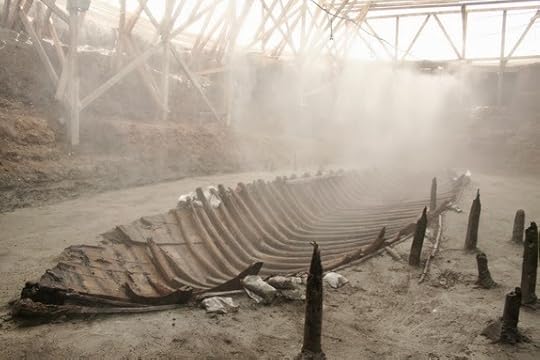 The Yenikapı shipwreck called YK 14 was a 9th-century merchant ship, sen here under sprinklers in April 2007. Waterlogged archaeological wood can be severely damaged if it is allowed to dry and therefore must be kept constantly wet during its excavation (Photo courtesy of the Institute of Nautical Archaeology at Texas A&M University /M. Jones)
The Yenikapı shipwreck called YK 14 was a 9th-century merchant ship, sen here under sprinklers in April 2007. Waterlogged archaeological wood can be severely damaged if it is allowed to dry and therefore must be kept constantly wet during its excavation (Photo courtesy of the Institute of Nautical Archaeology at Texas A&M University /M. Jones)by Agata Blaszczak-Boxe
Live Science
Archaeological excavations in Turkey that began in 2004 have yielded a unique historical treasure — 37 shipwrecks from the Byzantine Empire, eight of which are now described in a new report.
The shipwrecks were discovered at a site called Yenikapi, in Istanbul, in what was a port of the ancient city, then called Constantinople. The ships date back to the fifth to 11th centuries, and are in exceptionally good condition, archaeologists say.
"Never before has such a large number and types of well-preserved vessels been found at a single location," said study author Cemal Pulak, of the Institute of Nautical Archaeology at Texas A&M University.
The eight shipwrecks highlighted in the new report, which date from the seventh to 10th centuries, show that the shipbuilders at the time were using a more complex process than previously thought, according to the researchers. [Disasters at Sea: 6 Deadliest Shipwrecks]
Each of the ships the researchers examined in the report incorporated elements characteristic of two ship-building methods. In one method, the shell of a ship was built first, and in the other, the ship's skeleton was constructed first, and then the planks were attached. The researchers' analysis showed that a transition from a shell-first to a skeleton-first approach was already well underway by the seventh century.
"It is through meticulous and time-consuming detective work that we slowly begin to understand how these ships were built, modified, overhauled and used," Pulak told Live Science."By such means, we try understand the minds of the shipbuilders and their design and conceptualization processes, in order to better comprehend the history of science and engineering."
Of the eight ships that the researchers examined for the report, six were classified as "round ships," which means that they were propelled primarily or entirely by sail. The length of the round ships ranged from 26 to 48 feet (8 to 14.7 meters), and they were between 8 and 16 feet (2.5 and 5 m) wide.
The other two ships the researchers examined were galleys — long, oared ships, about 100 feet (30 m) long and 13 feet (4 m) wide. Among all of the 37 shipwrecks discovered at Yenikapi, there were a total of six Byzantine galleys, "notably the first shipwrecks of this type discovered from the Byzantine period," the researchers wrote in their report.
Previously, Byzantine galleys were known only from books and artwork dating to the time period, and such sources tend to be difficult to interpret. Therefore the well-preserved remains of these vessels at Yenikapi play a crucial role in archaeologists' study of Byzantine ships, the researchers said.
Until recently, much of the information about Byzantine ships had come from the several medium-size seagoing ships that had been excavated in the Mediterranean, Pulak said. "Yenikapi has yielded a wide array of small rowboats, fishing boats, utility vessels and even naval ships, all directly from Constantinople itself, the capital of the Byzantine Empire," he added.
A large museum in Istanbul is being planned to exhibit many of the wrecks, Pulak said. But it could take several years to restore the timbers of each ship's hull, he said.
The report was published online Dec. 8 in the International Journal of Nautical Archeology.
Published on December 29, 2014 07:05
History Trivia - Thomas Becket, Archbishop of Canterbury, murdered
December 29

1170 Thomas Becket, Archbishop of Canterbury, was murdered while at vespers in Canterbury Cathedral by four knights of King Henry II. Acting on the frustrated outburst of King Henry II, four knights entered the Cathedral and struck down the Archbishop. The knights fled. Henry would later do public penance for his ill-considered words that ultimately ended the quarrel between one-time friends.



1170 Thomas Becket, Archbishop of Canterbury, was murdered while at vespers in Canterbury Cathedral by four knights of King Henry II. Acting on the frustrated outburst of King Henry II, four knights entered the Cathedral and struck down the Archbishop. The knights fled. Henry would later do public penance for his ill-considered words that ultimately ended the quarrel between one-time friends.


Published on December 29, 2014 03:00
December 28, 2014
History Trivia - Westminster Abbey in London consecrated
December 28

1065 Westminster Abbey in London, built under the auspices of Edward the Confessor, was consecrated. The Benedictine monastery had been re-endowed and enlarged under the oversight of Edward the Confessor, but the King had been too ill to attend the consecration ceremonies. He was buried in the abbey after his death on January 4, 1066.



1065 Westminster Abbey in London, built under the auspices of Edward the Confessor, was consecrated. The Benedictine monastery had been re-endowed and enlarged under the oversight of Edward the Confessor, but the King had been too ill to attend the consecration ceremonies. He was buried in the abbey after his death on January 4, 1066.


Published on December 28, 2014 03:30
December 27, 2014
History Trivia - The Hagia Sophia dedicated
December 27

537 The Hagia Sophia (Church of the Holy Wisdom of God), one of the world's greatest architectural masterpieces, was dedicated in Constantinople by the Emperor Justinian. This was the third Cathedral, the previous two having been destroyed by fire.
 1390 Anne de Mortimer, Countess of Cambridge, and the mother of Richard Plantagenet, 3rd Duke of York, and grandmother of King Edward IV and King Richard III, was born.
1390 Anne de Mortimer, Countess of Cambridge, and the mother of Richard Plantagenet, 3rd Duke of York, and grandmother of King Edward IV and King Richard III, was born.


537 The Hagia Sophia (Church of the Holy Wisdom of God), one of the world's greatest architectural masterpieces, was dedicated in Constantinople by the Emperor Justinian. This was the third Cathedral, the previous two having been destroyed by fire.
 1390 Anne de Mortimer, Countess of Cambridge, and the mother of Richard Plantagenet, 3rd Duke of York, and grandmother of King Edward IV and King Richard III, was born.
1390 Anne de Mortimer, Countess of Cambridge, and the mother of Richard Plantagenet, 3rd Duke of York, and grandmother of King Edward IV and King Richard III, was born.
Published on December 27, 2014 03:30





